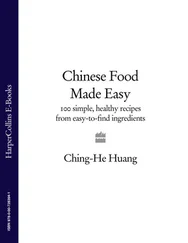Bliss Cameron and Veronica Green
MARIJUANA COOKING
Good Medicine Made Easy

Dedicated to all of the medical marijuana patients and individuals who continue to work for legal, safe and affordable access to this medicine.
Introduction
Bliss Cameron
I was actively involved with a community group working to legalize marijuana as medicine when Proposition 215 was passed by the people of the state of California in 1996. Patients were now able grow and use cannabis as medicine with an approval or recommendation from their doctors. As people became more aware that marijuana was medicine, questions arose regarding the need to regulate dosage and administer it in innovative ways.
One member of the group was a caregiver for his wife who had been using marijuana successfully to control the symptoms of glaucoma. They had found that ingesting cannabis was the most effective way to do this. This caregiver had, through trial and error, found a way to standardize the dose, which is critical for patients. Ingesting cannabis is very effective for many ailments, but it is imperative that the dose be standardized as too little is not effective, and too much can have side effects of its own. I’m a patient, too, and I wanted to learn how to do this for myself. By following the directions given by this caregiver, and through trial and error over the years, I’ve learned how to make baked goods that have been used successfully by many patients to control pain, increase appetite when needed, provide restful sleep and alleviate many symptoms from a wide range of medical conditions.
Coauthor Veronica Greene began making butter and cookies, using this method, with great success. She soon developed an extraction process for making cannabis/canola oil to meet special dietary needs of patients she was helping. We wrote this book to share these processes with patients and caregivers, using standard kitchen utensils and measurements. We are sharing what we’ve done that works for us. It can work for you, too.

A message for first time users
The initial response when smoking or ingesting marijuana varies from person to person. In addition to the desired medicinal effects, including a reduction of body pain, a lessening of inflammation, control over muscle spasms and positive shifts in emotional and mental states, marijuana can affect the body and mind in many ways. People use marijuana recreationally because of its ability to induce and magnify pleasurable sensations. Some of the common sensory experiences of being “high” can include a heightened attentiveness to touch, taste and sound and an increased interest in food and music.
There are some people, however, who find that marijuana makes them feel uncomfortable. This can be related to a person’s temperament, physiology or mood. If, as is prevalent under the current “war against drugs,” a person has been educated to believe that marijuana is harmful, it is particularly important to discuss this with a recommending doctor or other patients who have overcome these fears.
Other reported responses to marijuana use, perceived positively by some and negatively by others, include being in a dreamlike state, experiencing a disruption of concentration or shortterm memory, becoming restless and talkative, seeing humor in everything, sensing that time has “expanded,” and having altered judgment and coordination. These responses are more pronounced with larger doses, making it important for a novice to take only small amounts. It is a good idea to have an experienced person with you the first time you use marijuana. This person can talk you through any unexpected effects. The key is to just “chill out,” knowing that this will all pass, without any permanent harm to the body or mind.
Keeping a journal can help you understand personal responses and needs. There are so many variables, including the potency and strain of the marijuana and your individual mind-set, which can alter the outcome. Some people will determine that marijuana is simply not their medicine. Others will find it life altering, offering a multiplicity of benefits.

Making marijuana butter and oil extracts
In this book we will show you four ways to extract the THC and other active cannabinoids from marijuana. The plant material is ultimately strained out in all four methods, resulting in butter or oil that is easily digested and may be used in standard recipes in the same way one would use regular butter and oil. These four methods are:
I: Ground marijuana in clarified butter
II. Ground marijuana in oil
III. Whole marijuana in water with butter
IV. Whole marijuana in water with coconut oil
All of these processes can be carried out using the following kitchen tools:
• a large pot (methods III & IV)
• bowls for cleaning/sorting the marijuana
• measuring cups
• cheesecloth (for methods III & IV)
• spoon or spatula for stirring
• a blender for grinding marijuana (for methods I & II)
• a scale to weigh the marijuana
• a Crock-Pot (for methods I & II)
• a strainer

Method I: Ground Marijuana in Clarified Butter
Preparing the Cannabis

The ratio of cannabis to butter originally recommended to us was 2 ounces of cannabis for 3 pounds of butter. We have since been using a 1:1 ratio of 1 ounce of cannabis to 1 pound of butter, and find that this makes a good product. The form of cannabis varies, however. There’s the bud, usually carefully trimmed and considered the highest source of THC and other cannabinoids (referred to as THC+). When using bud, the ratio can be from 1 ounce of cannabis to 2 pounds of butter or a bit higher, to 2 ounces of cannabis to 3 pounds of butter. There’s the trim, which consists of small leaves cut from the buds. The basic ratio of 1 ounce of cannabis to 1 pound of butter is good for trim. There’s leaf, which is taken from the plant at several stages of growth. A good ratio for leaf is 1½ to 2 ounces of cannabis to 1 pound butter as the THC+ content is lower in leaf than in trim. The potency will vary widely depending on which of these forms is used. I’m fortunate to have a regular supply of fairly consistently potent cannabis and choose to use bud trim as it has been more available than bud and has a high THC+ content. It’s important, however, to emphasize that the strain and maturity of the plant also play into the strength.
Читать дальше




















